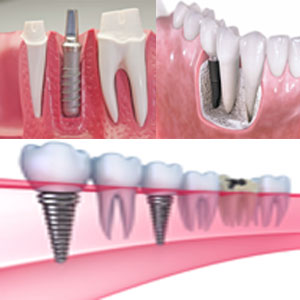Dental Implants

A Dental Implant is a “root” device, usually made of titanium, used in dentistry to support restorations that resemble a tooth or group of teeth to replace missing teeth.
The bone of the jaw accepts and Osseo integrates with the titanium post. Osseointegration refers to the fusion of the implant surface with the surrounding bone. Dental implants will fuse with bone; however, they lack the periodontal ligament, so they will feel slightly different from natural teeth during chewing.
Dental implants can be used to support a number of dental prostheses, including crowns, implant-supported bridges or dentures. They can also be used as anchorage for orthodontic tooth movement. The use of dental implants permits undirectional tooth movement without reciprocal action.
A typical implant consists of a titanium screw (resembling a tooth root) with a roughened or smooth surface. The majority of dental implants are made out of commercially pure titanium, which is available in 4 grades depending upon the amount of carbon and iron contained.
In general, practitioners allow 2–6 months for healing but preliminary studies show that early loading of implant may not increase early or long term complications.
Minimally invasive methods of early dental implant placement reduce the cost of installed implants and shorten the implant-prosthetic rehabilitation time to within 4–6 months.